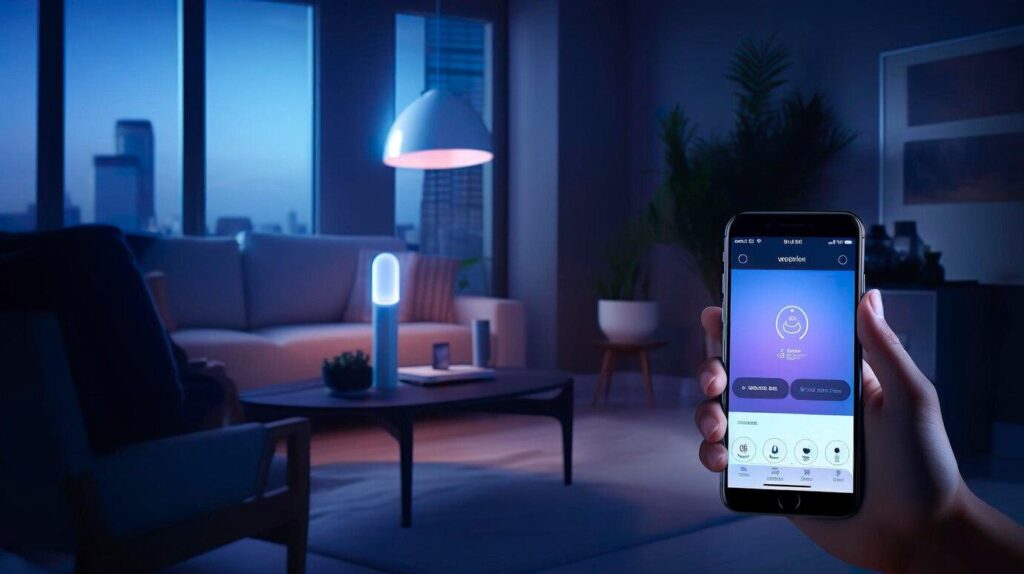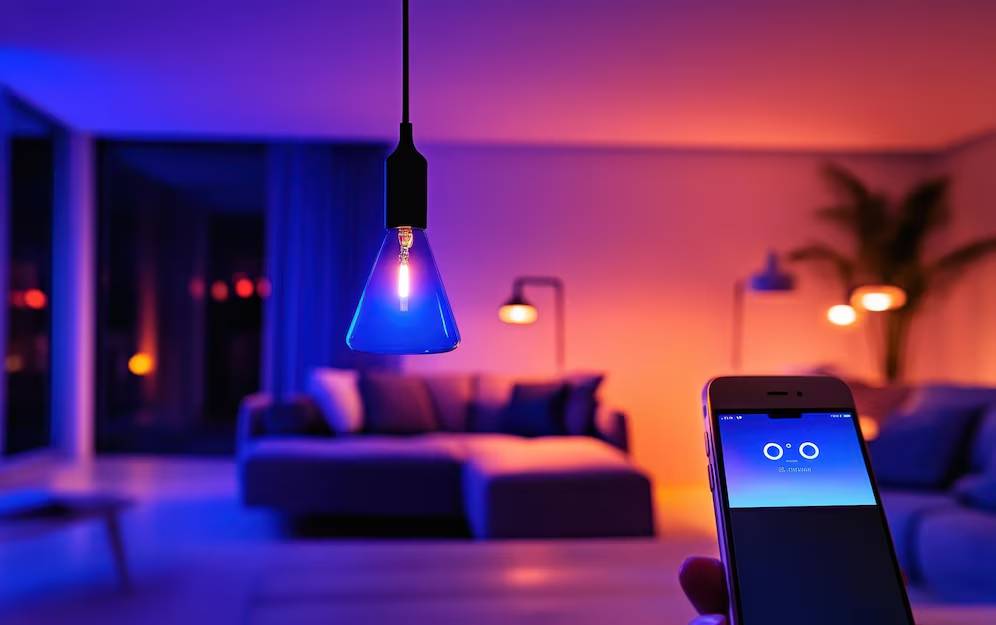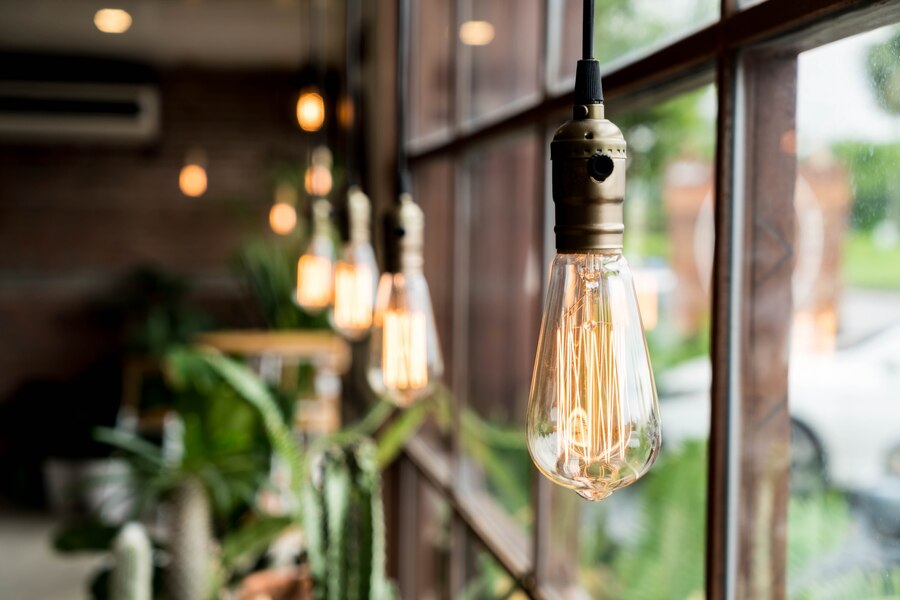The Interior Blog

Automating Your Lights for Maximum Energy Savings
Imagine coming home after a long day, and your lights have already set the perfect scene — cosy, welcoming, and energy-efficient. No need to flip a switch or fiddle with apps. This isn’t the future; it’s the power of auto lighting.
In this guide, you’ll discover practical light automation tips to achieve smart home energy savings without sacrificing comfort or style. We’ll cover real-world advice, success stories, and the best technologies to make lighting effortless — and brilliantly efficient. Ready to illuminate smarter living? Let’s begin!
Why Light Automation Matters for Energy Savings
Automating your lights goes beyond being a neat technological feature; it represents a significant move toward a more sustainable and environmentally friendly home. This approach not only enhances convenience but also helps reduce energy consumption, leading to lower utility bills. By controlling lighting based on occupancy and natural light availability, you can minimise waste and create a more efficient living space.
Key benefits:
- Energy Efficiency: Automated lighting systems adjust according to your needs, ensuring lights are only on when necessary.
- Cost Savings: With reduced energy usage, you can enjoy lower electricity bills, contributing to long-term financial savings.
- Convenience: Smart lighting offers seamless control, allowing you to manage your home’s ambience with ease.
- Enhanced Security: Timed lighting can deter intruders, making your home appear occupied even when you are away.
- Environmental Impact: Decreasing energy consumption lowers your carbon footprint, helping protect the planet for future generations.
- Cuts energy waste: Lights switch off automatically when not needed
- Reduces electricity bills: Smarter use means lower monthly costs
- Enhances convenience: No more worrying about forgotten lights
- Improves home security: Lights can simulate occupancy when you’re away
Quick Fact: According to Energy Saving Trust, automatic lighting and sensors can reduce household lighting energy consumption by up to 35%.
Core Principles of Light Automation for Energy Efficiency
1. Automate Based on Occupancy
Use motion sensors or occupancy detectors to control lighting based on human presence.
Example: Lights in hallways, bathrooms, or closets switch on when someone enters and off when they leave.
2. Time-Based Scheduling
Program your lights to turn on and off according to your daily routines.
Smart Tip:
- Set the living room lights to dim gradually at bedtime
- Program porch lights to turn off automatically at sunrise
3. Circadian Lighting

Align your indoor lighting with natural daylight cycles for better well-being and efficiency.
Example:
- Brighter, cool tones during the day for productivity
- Warmer tones in the evening to encourage relaxation
Interested in even smarter setups? Explore How Smart Dimmers Save Money and Space.
Top Technologies for Smart Home Energy Savings Through Lighting
1. Smart Bulbs

Features:
- Built-in timers
- Dimming and colour temperature control
- App and voice command compatibility
Best Picks:
- Philips Hue
- LIFX
- TP-Link Kasa Smart
2. Smart Switches and Dimmers
Features:
- Control traditional bulbs smartly without replacing them
- Integrate with wider smart home systems
3. Motion and Occupancy Sensors
Features:
- Trigger lighting based on movement
- Perfect for rarely used spaces
Pro Tip: Combine sensors with smart switches for ultimate flexibility.
4. Home Automation Hubs
Features:
- Centralise lighting control
- Create complex routines involving lights, heating, and security
Best Hubs:
- Samsung SmartThings
- Apple HomeKit
- Amazon Echo with Alexa Routines
Practical Light Automation Tips for Maximum Savings
Smart strategies:
- Use sunset/sunrise triggers: Let your lighting adjust with natural daylight
- Create “Away” modes: Auto turn off unnecessary lights when you’re out
- Opt for room-specific automation:
- Kitchen: Task lighting auto-on during dinner hours
- Bedroom: Gentle wake-up light simulations in the morning
- Use minimal necessary brightness: Avoid maximum settings unless truly needed
- Combine with voice assistants: “Alexa, turn off all lights” becomes second nature
Real-Life Inspiration: Smart Lighting Success Stories
A Family Home in Bristol
The Thompsons automated their hallway and living room lights using occupancy sensors and smart bulbs.
They report an average 25% drop in monthly electricity bills since the change.
A Studio Flat in London
Ella uses app-scheduled smart bulbs synced with sunrise and sunset.
“I’m saving money, but even better, my flat feels in rhythm with the world outside,” she says.
Common Mistakes to Avoid with Auto Lighting
Watch out for:
- Overcomplicating setups: Too many layers of automation can confuse rather than simplify
- Ignoring manual override: Always allow easy manual control
- Not adjusting for seasons: Update sunrise/sunset schedules seasonally
- Neglecting firmware updates: Regular updates ensure your system runs smoothly and securely
Need more eco-friendly lighting advice? Check out Choosing the Most Energy-Efficient Smart Bulbs.
Light the Way to Greener Living

Light automation is more than a luxury; it’s a smart strategy for boosting comfort, reducing waste, and saving serious money. With the right light automation tips, you can transform your home into an eco-friendly, brilliantly lit sanctuary that works effortlessly in the background.
By embracing smart home energy savings with auto lighting, you’re not just improving your home — you’re also contributing to a brighter, greener future.
Ready to make the switch? Begin by implementing a straightforward schedule or a motion sensor today to witness the magic firsthand! Embrace the convenience and efficiency these tools offer in your daily life. Feel free to share your innovative automation ideas in the comments below. We encourage you to subscribe for more smart living strategies and tips that can enhance your experience!









